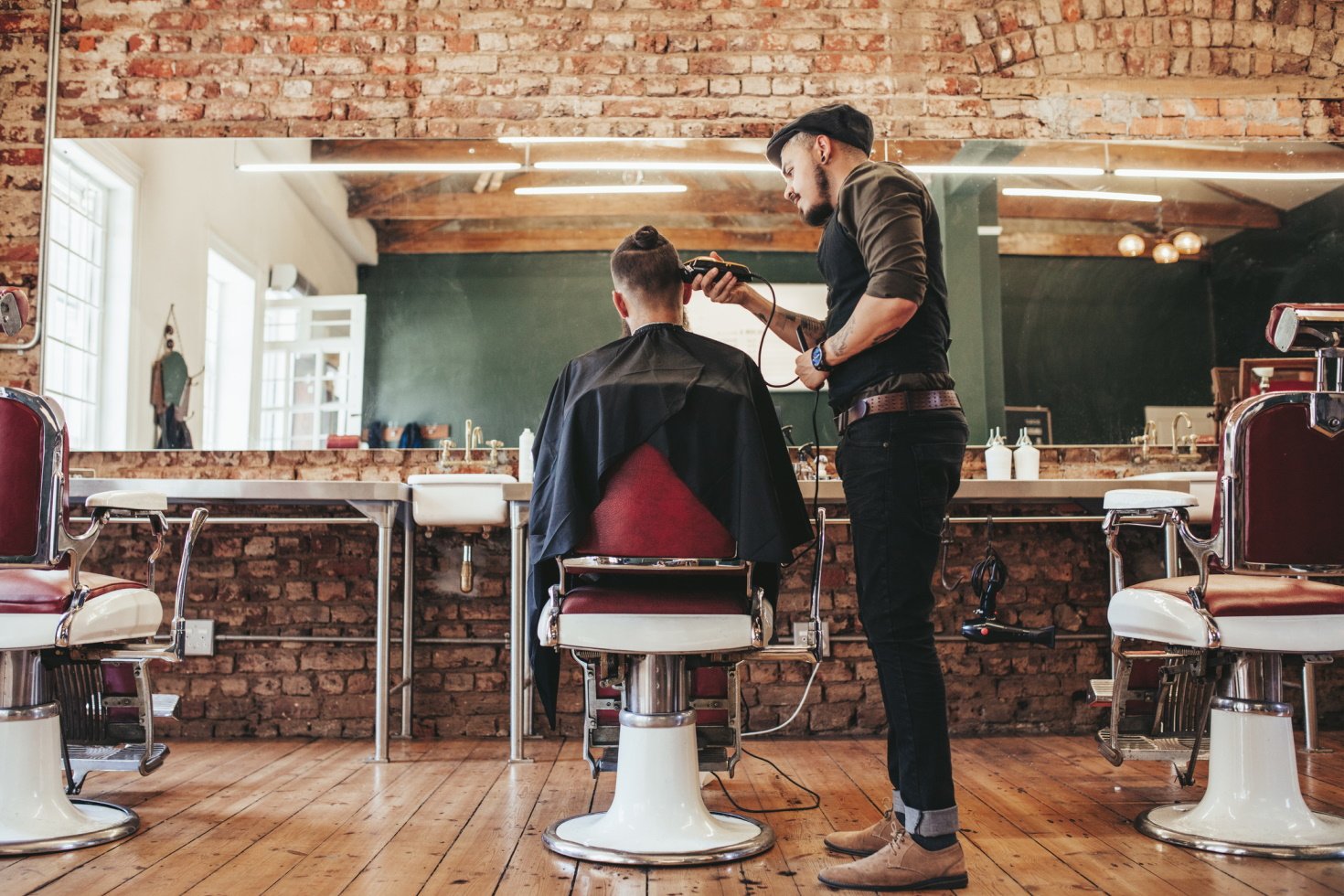Barber • Perspective
Barbershop vs. Salon: What's the Difference?

By Shanalie Wijesinghe . Sep.09.2022
Share Article
Find out which kind of haircare specialist is right for your next cut.
Maybe you’re long overdue for a trim, or maybe you’re looking for a new professional to keep your hair looking its best on a monthly basis. If you’re starting to do your research on where to get your next cut, you’ve likely already found yourself on the periphery of the longstanding barbershop vs salon debate. You may be wondering if they’re really all that different, and if so, which one is right for you.
This article will break down the differences between barbershops and salons, introducing official distinctions between the two, common services, and even some of the history behind their respective practices. Now let’s cut — or perhaps clip — to the chase.
Barbershop vs salon: does it matter which you choose?
Yes, it very much matters whether you choose a barbershop or a salon for your next haircut. Both types of businesses focus on caring for your hair, but the specific services they offer vary substantially. Barbershops specialize in shorter haircuts that require little styling between visits, while salons often focus more on longer haircuts as well as the styling techniques and products needed to maintain them.
Despite their overlap, one of the biggest differences between barbershops and salons is a regulatory one: to legally hang your shingle as a barber requires a distinct set of trainings and certifications from doing so as a hairstylist cosmetologist. These specific requirements vary by state, and you may even find barbers and cosmetologists working under the same roof.
Aside from the legal distinction, one of the major historical differences for making a barbershop vs salon decision was the gender of the clientele. Thankfully, more and more haircare businesses are leaving that distinction behind. Whether it has a barber’s pole spinning gently on the storefront or not, the main consideration for choosing a modern and welcoming haircare specialist should simply be the kind of haircut and haircare you desire.
Barbershops specialize in shorter cuts and shaves
As we briefly mentioned above, the traditional domain of the barbershop is shorter cuts, typically performed with clippers and straight razors: think buzzcuts, crewcuts, fades, short side parts, and other hair styles in that neighborhood. Barbers are also famed for their shaving skills, using the traditional combo of hot lather and a straight razor to leave faces smooth or with a perfectly trimmed beard and mustache. Anyone who thinks men “never used to pamper themselves” clearly has not felt the sensory treat of a hot towel, hot lather, and cool razor against their skin.
Common barbershop services include…
Shorter hair cuts (clipper length)
Facial hair trimming
Hot lather and straight-razor shave
Since barber services typically take less time than those offered by salons, barbershops are often a better bet for walk-ins. Sitting in a chair by the door and bantering about current events and last night’s game is an essential part of the experience to many barbershop diehards — but you could always schedule an appointment ahead of time if you’d rather just get your cut and go.
Barbers have been around since at least the days of the ancient Greeks, and the image of the red-and-white (and sometimes blue) barber pole itself has been around for hundreds of years. While the duties of the barber have contracted somewhat since those days — the red of the pole used to represent “medicinal” bloodletting, and barbers would also be happy to pull any troublesome teeth while you were in town — they have remained an essential part of their local community.
Salons specialize in longer cuts and styling
If the short haircut is the uncontested domain of barbers, then salons specialize in the kind of hair that you (or anyone else who has your permission) can really run your fingers through. The salon hairstylist’s tools of choice are the comb and shears, which they use to craft any number of hairstyles. The cutting of the hair itself is typically the beginning and end at a barbershop, but a salon hairdresser will be equipped to wash, style, and treat your hair to transform its look, from texture to color and beyond.
Common salon services include…
Longer hair cuts (shear length)
Hair styling
Hair treatment (including coloring) and products
Facials, manicures, pedicures
Salons also typically carry a full selection of products to help maintain your ‘do between visits, which your stylist will likely recommend as you’re preparing to check out. Beyond hair treatments, some salons offer a broader menu of beauty and self-care services such as facials, manicures, and massages.
The practice of hairdressing has been around as long as people have wanted to keep their hair out of their eyes, but our modern conception of the hair salon started in the late 19th century. Former domestic servant Martha Matilda Harper started her first Harper Hairdressing Parlor in 1888, offering two-hour treatments meant to improve the health and appearance of clients’ hair. Harper salons would start appearing around the U.S. just years later, as Harper also pioneered our modern notion of business franchising.
Wherever your barbershop vs salon considerations ultimately bring you, you can look forward to doing business with haircare specialists who are happy to use the tools of their trade to bring your next look to life.
Sign up for weekly blog updates.
